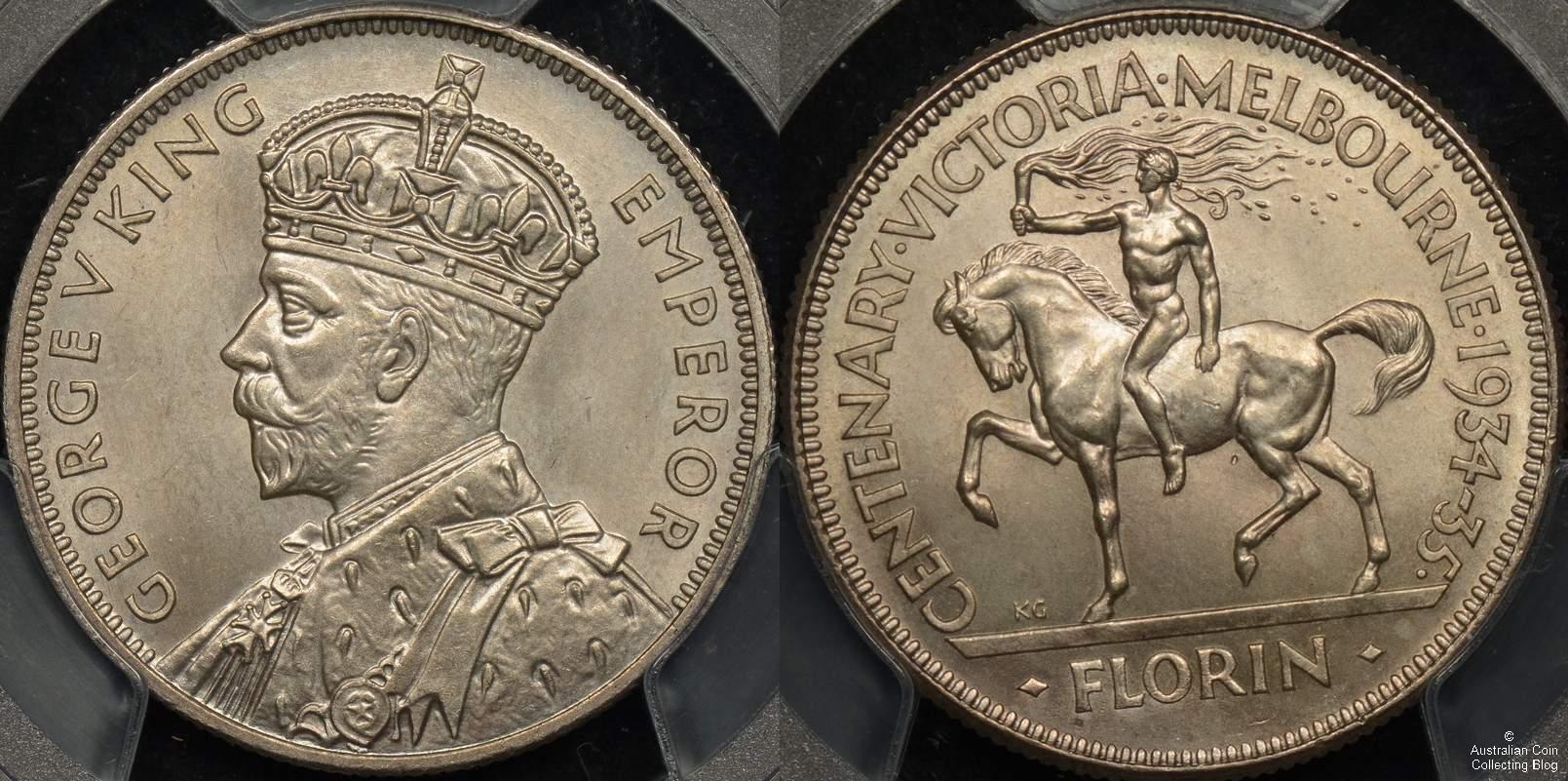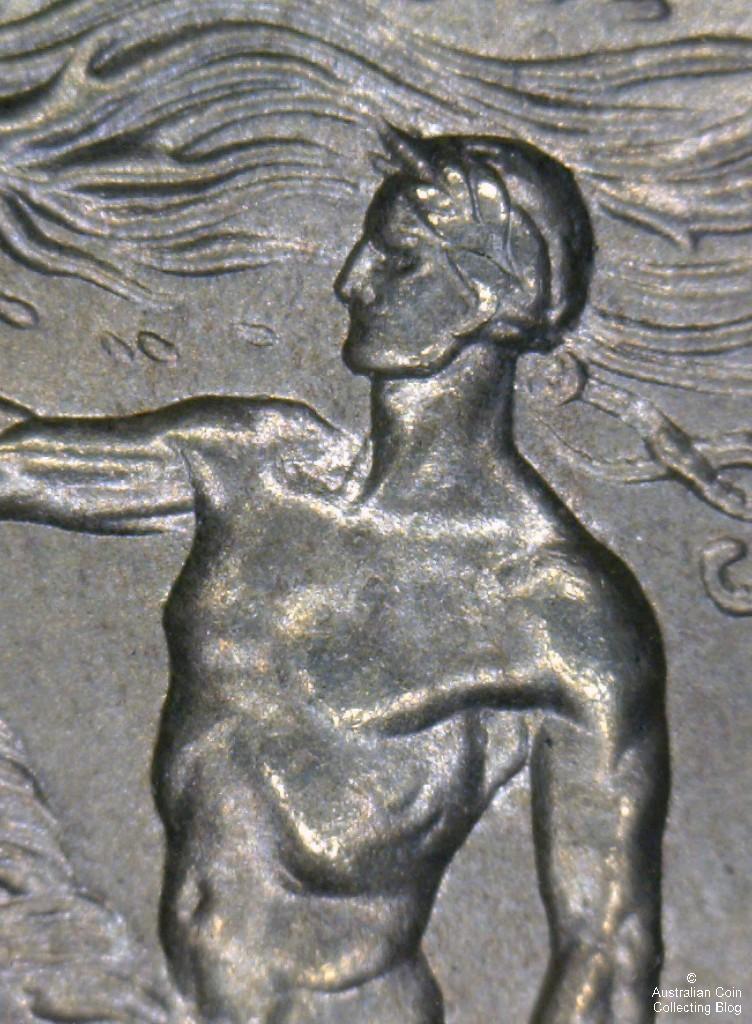On June 21st 1934 it was announced in the “Argus”, the Melbourne daily newspaper of the time, that arrangements had been made between Centenary officials, representatives of the British Treasury and the Commonwealth Government for a special commemorative florin to be struck for the occasion. This occasion was the centenary of first two permanent settlements in Victoria, Portland Bay in 1834 and Melbourne in 1835.
A limited number of coins were struck for the Centenary Council, to be sold and distributed by them at a shilling above face value with the profits going to the Council. The costs for the production of this coin were borne by the Centenary Council itself which included the provision of a special die which cost approximately 100 pounds (the average wage in 1934 was just 4 pounds so this was no small expense).
As of 15 February 1935, of the 75,000 coins that had been minted only 11,000 had been sold which became a burden on the Centenary Council. The Centenary Council were told soon after that the remaining unsold coins would be melted down in 6 weeks time if they had not been sold.
With poor sales due to the great depression, a local department store put in a request for 30,000 coins. This was “Foy and Gibson”, with the coins to be given out in customers’ change along with a commemorative paper bag to store their special coin. These days both types of “Foy” bag, the Melbourne and Perth command high premiums (often more than the value of a Centenary florin) even without a coin inside.
21,000 coins were eventually melted down leaving a mintage of the 1934-5 Centenary Florin at 54,000 coins.
That’s the history of the coin in a nutshell but what about the design on the coin? The obverse was the effigy of George V by Percy Metcalfe which was used on New Zealand and Canadian coins but only on the Centennial Florin in Australia. This design was also used in other Commonwealth countries at the time.
The reverse featured a horse and rider by George Kruger Gray, known also for his design on the ramshead shilling, coat of arms florin and the crown. The design signified the centenary of settlement in Victoria. The horse represented the major mode of transportation throughout the previous 100 years (1834-1935) and show it was a major contributor to exploration, settlement, cultivation and industry in Victoria. The horses front foot is raised indicating a limitless future to the growth and prosperity of Victoria. The nude rider, a young Victorian gentleman grown to manhood indicating a strong future for the state. The torch he bears symbolises progress and enlightenment.
This Australian centenary florin is 28.5mm in diameter and weighs 11.31grams. It is manufactured from 92.5% silver and 7.5% copper. These key date commemorative coins have a high catalogue value and beware of a lot of counterfeit types out there.

